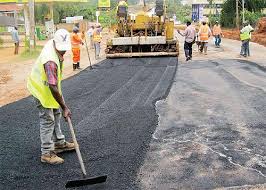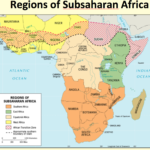Growth in the Sub-Saharan region is projected to strengthen to 3.1 percent in 2018 and to 3.5 percent in 2019, below its long-term average, according to the World Bank’s June 2018 Global Economic Prospects report.
Africa’s largest economies like; Nigeria is anticipated to grow by 2.1 percent this year, as non-oil sector growth remains subdued due to low investment, and at a 2.2 percent pace next year.
South Africa is forecast to expand 1.4 percent in 2018 and 1.8 percent in 2019 as a pickup in business and consumer confidence supports stronger growth in investment and consumption expenditures.
Angola is expected to grow by 1.7 percent in 2018 and 2.2 percent in 2019, reflecting an increased availability of foreign exchange due to higher oil prices, rising natural gas production, and improved business sentiment.
The report says that in non resource-intensive countries, the pickup in economic activity is being supported by improving harvests following droughts, citing Rwanda and Uganda. While others like Benin, Senegal are being supported by infrastructure development.
Rising mining output and stable metals prices are anticipated to boost activity in metals exporters. Growth in non-resource-intensive countries is expected to remain robust, supported by improving agricultural conditions and infrastructure investment.
However, the report warns that debt burdens are high and rising in a number of Low Income Countries, reflecting a mix of factors including the disclosure of previously unreported debt in Mozambique, governance issues in The Gambia, the earlier plunge in oil prices in Chad and low public saving in Ethiopia. “Poverty levels are elevated, especially among (LICs) in Sub-Saharan Africa, where nearly half of the population lives below the poverty line,” the report reads in part.
It says that poverty levels are high in most LICs. According to the report, nearly half of the population in LICs continues to live below the international poverty line of US$1.90 a day, at 2011 purchasing power parity (PPP) exchange rates.
“The proportion of the LICs’ population below the poverty line is higher in Sub-Saharan Africa (SSA) than in other regions, reflecting the relatively slow decline in poverty levels among fragile countries and metals exporters in SSA,” the report says.
The report notes that inflation continues to fall across LICs, helped by declining food prices, prompting central banks in some countries to further cut interest rates for example, in Mozambique and Uganda. However, inflationary pressures are high in several countries, owing to currency depreciations such as in Democratic Republic of Congo, Ethiopia and Liberia.
In some fragile countries like The Gambia and Zimbabwe, political transitions will allow for a pickup in activity, as opportunities for reforms boost investor sentiment. However, the recovery will be slower than previously anticipated among oil exporters, as they continue to adjust to low oil revenue and the heavy burden of external commercial debt.
Global Economic Prospects is a World Bank Group Flagship Report that examines global economic developments and prospects, with a special focus on emerging market and developing countries







